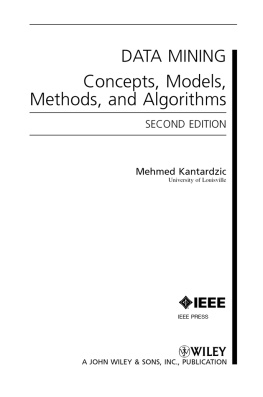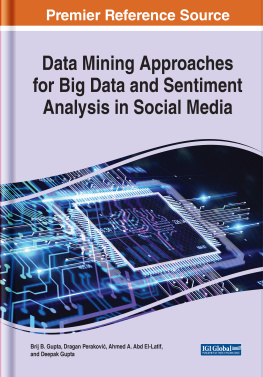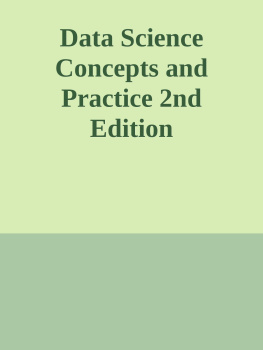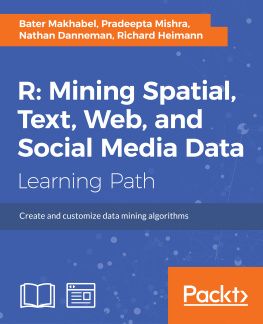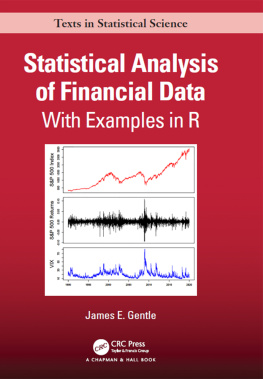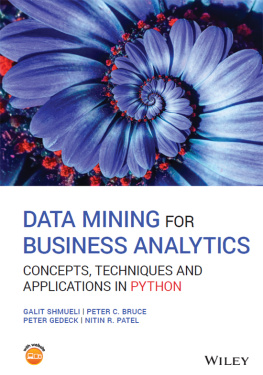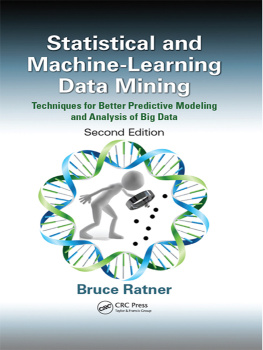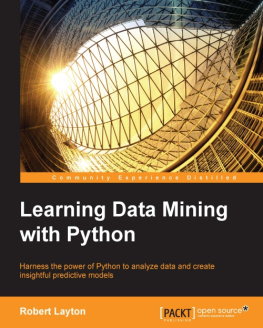IEEE Press
445 Hoes Lane
Piscataway, NJ 08854
IEEE Press Editorial Board
Lajos Hanzo, Editor in Chief
| R. Abhari | M. El-Hawary | O. P. Malik |
| J. Anderson | B-M. Haemmerli | S. Nahavandi |
| G. W. Arnold | M. Lanzerotti | T. Samad |
| F. Canavero | D. Jacobson | G. Zobrist |
Kenneth Moore, Director of IEEE Book and Information Services (BIS)
Technical Reviewers
Mariofanna Milanova, Professor
Computer Science Department
University of Arkansas at Little Rock
Little Rock, Arkansas, USA
Jozef Zurada, Ph.D.
Professor of Computer Information Systems
College of Business
University of Louisville
Louisville, Kentucky, USA
Witold Pedrycz
Department of ECE
University of Alberta
Edmonton, Alberta, Canada
Copyright 2011 by Institute of Electrical and Electronics Engineers. All rights reserved.
Published by John Wiley & Sons, Inc., Hoboken, New Jersey.
Published simultaneously in Canada.
No part of this publication may be reproduced, stored in a retrieval system, or transmitted in any form or by any means, electronic, mechanical, photocopying, recording, scanning, or otherwise, except as permitted under Section 107 or 108 of the 1976 United States Copyright Act, without either the prior written permission of the Publisher, or authorization through payment of the appropriate per-copy fee to the Copyright Clearance Center, Inc., 222 Rosewood Drive, Danvers, MA 01923, (978) 750-8400, fax (978) 750-4470, or on the web at www.copyright.com. Requests to the Publisher for permission should be addressed to the Permissions Department, John Wiley & Sons, Inc., 111 River Street, Hoboken, NJ 07030, (201) 748-6011, fax (201) 748-6008, or online at http://www.wiley.com/go/permissions.
Limit of Liability/Disclaimer of Warranty: While the publisher and author have used their best efforts in preparing this book, they make no representations or warranties with respect to the accuracy or completeness of the contents of this book and specifically disclaim any implied warranties of merchantability or fitness for a particular purpose. No warranty may be created or extended by sales representatives or written sales materials. The advice and strategies contained herein may not be suitable for your situation. You should consult with a professional where appropriate. Neither the publisher nor author shall be liable for any loss of profit or any other commercial damages, including but not limited to special, incidental, consequential, or other damages.
For general information on our other products and services or for technical support, please contact our Customer Care Department within the United States at (800) 762-2974, outside the United States at (317) 572-3993 or fax (317) 572-4002.
Wiley also publishes its books in a variety of electronic formats. Some content that appears in print may not be available in electronic formats. For more information about Wiley products, visit our web site at www.wiley.com.
Library of Congress Cataloging-in-Publication Data:
Kantardzic, Mehmed.
Data mining : concepts, models, methods, and algorithms / Mehmed Kantardzic. 2nd ed.
p. cm.
ISBN 978-0-470-89045-5 (cloth)
1. Data mining. I. Title.
QA76.9.D343K36 2011
006.3'12dc22
2011002190
oBook ISBN: 978-1-118-02914-5
ePDF ISBN: 978-1-118-02912-1
ePub ISBN: 978-1-118-02913-8
To Belma and Nermin
PREFACE TO THE SECOND EDITION
In the seven years that have passed since the publication of the first edition of this book, the field of data mining has made a good progress both in developing new methodologies and in extending the spectrum of new applications. These changes in data mining motivated me to update my data-mining book with a second edition. Although the core of material in this edition remains the same, the new version of the book attempts to summarize recent developments in our fast-changing field, presenting the state-of-the-art in data mining, both in academic research and in deployment in commercial applications. The most notable changes from the first edition are the addition of
- new topics such as ensemble learning, graph mining, temporal, spatial, distributed, and privacy preserving data mining;
- new algorithms such as Classification and Regression Trees (CART), Density-Based Spatial Clustering of Applications with Noise (DBSCAN), Balanced and Iterative Reducing and Clustering Using Hierarchies (BIRCH), PageRank, AdaBoost, support vector machines (SVM), Kohonen self-organizing maps (SOM), and latent semantic indexing (LSI);
- more details on practical aspects and business understanding of a data-mining process, discussing important problems of validation, deployment, data understanding, causality, security, and privacy; and
- some quantitative measures and methods for comparison of data-mining models such as ROC curve, lift chart, ROI chart, McNemars test, and K-fold cross validation paired t-test.
Keeping in mind the educational aspect of the book, many new exercises have been added. The bibliography and appendices have been updated to include work that has appeared in the last few years, as well as to reflect the change in emphasis when a new topic gained importance.
I would like to thank all my colleagues all over the world who used the first edition of the book for their classes and who sent me support, encouragement, and suggestions to put together this revised version. My sincere thanks are due to all my colleagues and students in the Data Mining Lab and Computer Science Department for their reviews of this edition, and numerous helpful suggestions. Special thanks go to graduate students Brent Wenerstrom, Chamila Walgampaya, and Wael Emara for patience in proofreading this new edition and for useful discussions about the content of new chapters, numerous corrections, and additions. To Dr. Joung Woo Ryu, who helped me enormously in the preparation of the final version of the text and all additional figures and tables, I would like to express my deepest gratitude.
I believe this book can serve as a valuable guide to the field for undergraduate, graduate students, researchers, and practitioners. I hope that the wide range of topics covered will allow readers to appreciate the extent of the impact of data mining on modern business, science, even the entire society.
MEHMED KANTARDZIC
Louisville
July 2011
PREFACE TO THE FIRST EDITION
The modern technologies of computers, networks, and sensors have made data collection and organization an almost effortless task. However, the captured data need to be converted into information and knowledge from recorded data to become useful. Traditionally, the task of extracting useful information from recorded data has been performed by analysts; however, the increasing volume of data in modern businesses and sciences calls for computer-based methods for this task. As data sets have grown in size and complexity, so there has been an inevitable shift away from direct hands-on data analysis toward indirect, automatic data analysis in which the analyst works via more complex and sophisticated tools. The entire process of applying computer-based methodology, including new techniques for knowledge discovery from data, is often called data mining.
The importance of data mining arises from the fact that the modern world is a data-driven world. We are surrounded by data, numerical and otherwise, which must be analyzed and processed to convert it into information that informs, instructs, answers, or otherwise aids understanding and decision making. In the age of the Internet, intranets, data warehouses, and data marts, the fundamental paradigms of classical data analysis are ripe for changes. Very large collections of datamillions or even hundred of millions of individual recordsare now being stored into centralized data warehouses, allowing analysts to make use of powerful data mining methods to examine data more comprehensively. The quantity of such data is huge and growing, the number of sources is effectively unlimited, and the range of areas covered is vast: industrial, commercial, financial, and scientific activities are all generating such data.

